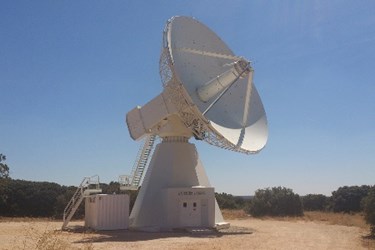Astronomers Grapple With Strange Radio Signals From Red Dwarf Star
By Jof Enriquez,
Follow me on Twitter @jofenriq

Scientists are trying to unravel the mystery of the true nature of strange radio waves emanating from a red dwarf star 11 light years away from Earth.
While observing a group of red dwarf stars in the constellation Virgo, astronomers at the Arecibo Observatory in Puerto Rico observed on May 12 "some very peculiar signals in the 10-minute dynamic spectrum" unique to a dwarf star designated as Ross 128 at a frequency astronomers have not detected previously in red dwarfs.
"The signals consisted of broadband quasi-periodic non-polarized pulses with very strong dispersion-like features," Abel Méndez, director of the Planetary Habitability Laboratory at the University of Puerto Rico at Arecibo, wrote in a blog post last week.
Méndez says his team believes the radio bursts are not local radio frequency interferences (RFI) -- which is fairly common in signals picked up by radio telescopes on Earth.
"Most of the time it’s just local interference. But what’s happened here is the signal could be easily interpreted as something astronomical or interference. We were not able to recognize either way," Méndez told Newsweek.
If these strange radio signals are cosmic in origin, Mendez wrote in his post that they are considering three explanations, each with its own caveat.
Firstly, these emissions from Ross 128 may be similar to Type II solar flares. However, Type II solar flares occur at much lower frequencies and the dispersion suggests a much farther source or a dense electron field (e.g., the stellar atmosphere?), according to Méndez.
Secondly, the signals could be emitted from another object in the field of view of Ross 128. Astronomers have not observed many other nearby objects, though.
Thirdly, the radio waves may come from a high-orbit satellite, since low-orbit satellites are quick to move out of the field of view. But scientists have never seen satellites emit bursts like the one they detected.
"In case you are wondering, the recurrent aliens hypothesis is at the bottom of many other better explanations," adds Mendez, whose team scanned Ross 128 again on Sunday, and will announce any new findings this week, reported The Atlantic.
The Arecibo Observatory, perhaps best known to the public as part of the Search for Extra-Terrestrial Intelligence (SETI) program, detected the mysterious radio bursts from Ross 128 under a current scientific campaign to study the activity of red dwarf stars, which are of special interest due to their potential to support habitable planets around them. The famed radio telescope also in 2012 picked up a recurring fast radio burst that came from deep space.
